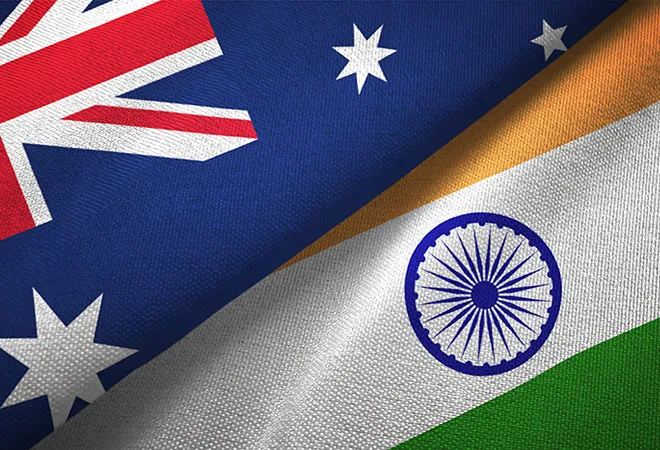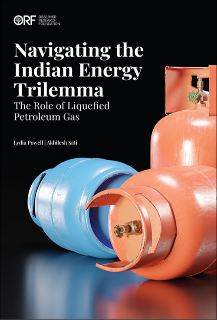
India and Australia, two of the largest powers among the littoral states of the Indian Ocean, play important geopolitical roles in the security and stability of the Indian Ocean Region (IOR). While their interest in the region has been skewed in the past, the IOR’s rising geopolitical and economic importance and global influence is creating potential for cooperation among the countries, as security, economic, and environmental threats to the nations in the IOR are becoming convergent. Collaboration between India and Australia in strengthening Blue Economy (BE) initiatives in the IOR could prove to be a successful tool in addressing these imminent threats.
IOR — Significance and concerns
The IOR holds great significance in the future world order in terms of economic growth, natural resources, as well as major sea lines of communication. However, the economic geography of the IOR is not just expanding, it’s also being re-shaped and de-stabilised by China’s overarching influence through the Belt and Road Initiative (BRI), dominance over critical sea trade routes, and debt diplomacy.
For India and Australia, security and stability in the IOR is crucial. Being geographically and economically central to the IOR, any geo-economic contestations will have a huge impact on India. With India already facing territorial threats amid the String of Pearls being woven by China, Chinese dominance over the region severely limits India’s growth and power. For Australia, there is an emerging acknowledgment of the importance of stability in the IOR, especially as the consistently increasing trade between Australia and the IOR will be under risk given China’s influence. Australia learnt the negative consequences of extreme dependence on China, having faced economic retaliation from the latter over the former’s inquiry into the origins of the coronavirus.
Geo-economic and environmental consequences for the two countries in the IOR are far too large to ignore and create significant overlap to work together.
Furthermore, the IOR is also facing various increasing environmental risks <1> in addition to the threat of climate change <2> — both of which pose a serious concern and risk to the lives and livelihoods of millions of people in India and Australia. Thus, geo-economic and environmental consequences for the two countries in the IOR are far too large to ignore and create significant overlap to work together.
Blue Economy
The Blue Economy presents a unique and exceptional opportunity for cooperation between India and Australia to approach the growing concerns in the region. While the advantages of BE in addressing environmental threats and raising economic growth are well known, blue pursuits will also stabilise the ocean space while re-establishing the Rules-Based Order (RBO) and creating significant influence.
The significance of BE in pursuing sustainable economic, political, and security development in the IOR is best evident by Indian Ocean Rim Association’s (IORA) increased focus in strengthening the Blue Economy in its agenda. Besides, both India and Australia understand BE’s potential in solving the principal problems in the IOR and are equally motivated to strengthen their blue pursuits as exhibited by their individual efforts.
Areas of cooperation
While India and Australia have plenty of collaboration opportunities, we focus here on two important areas of cooperation.
Aquaculture
India and Australia have registered an exceptional growth in the aquaculture industry and there is still huge growth potential. The two countries’ aquaculture growth is dependent on cultivating aqua species that are not cultivated by the other <3>, which creates a demand for the other’s goods in their domestic market. While, Australia has always stressed over strict environmental and food safety guidelines and continues to do so in the National Aquaculture Strategy 2017, India finally aims towards more sustainable practises in aquaculture in its Draft National Inland Fisheries and Aquaculture Policy 2019. Hence, a common ground for the two countries to share sustainable practises in aquaculture has emerged.
Moving forward, India must ensure minimal deviations from Australian standards to allow flow of more goods and safe infrastructure for trade between the two countries. Although, both countries are a part of the Network of Aquaculture Centres in Asia-Pacific (NACA), which allows multilateral cooperation over aquaculture concerns in the region, there is a requirement for a better bilateral cooperation among the two countries, especially in terms of building capacity and training on mitigation measures.
India must ensure minimal deviations from Australian standards to allow flow of more goods and safe infrastructure for trade between the two countries.
Illegal, unreported, and unregulated fishing
Australia has undertaken befitting national plans to combat illegal, unreported, and unregulated (IUU) fishing, which includes monitoring, controlling, and surveillance (MCS) and management of fisheries; hence, proving to be extremely active against IUU fishing in the IOR. On the other hand, India has plenty of regulations in place to manage domestic ‘in-province’ as well as foreign ‘beyond-province’ fisheries and fishing vessels, including satellite-based vessel imaging.
Both countries’ extensive knowledge in mitigation measures could result in mutual learning and better combating strategies through joint fisheries partnerships especially meant to address IUU fishing, while also establishing a knowledge sharing hub and enhancing capacity building programmes. Furthermore, since the IOR still finds itself deeply ineffective in mitigating IUU fishing, India and Australia could collaborate with other countries in the region to create marine protected areas and intensify the MCS mechanism in the IOR.
Conclusion
The Blue Economy initiatives hence not only combines India and Australia’s shared geo-economic, geostrategic, and geo-environmental motivations in the IOR, but also compels both the countries to acknowledge the untapped growth and power potential that could be fully realised with cooperation and mutual learning in this arena. Furthermore, both New Delhi and Canberra need to keep up in their blue pursuits lest they may lose the ‘blue race’ in the IOR to rivals like China. Thus, the best way forward for the two nations is together.
<1> Environmental risks include land and marine pollution, biodiversity loss, over-fishing, and habitat destruction.
<2>Expected Impacts of climate crisis include — increasing sea surface temperatures, rising sea levels, stronger tropical cyclones, acidification of waters.
<3> While fish, shrimp, algae or shellfish — are the backbone of India’s aquaculture industry, the top five aquaculture species groups, in order of production value for Australia, are: Salmonids, Tuna, Edible Oysters, Pearl Oysters, and Prawns.
The views expressed above belong to the author(s). ORF research and analyses now available on Telegram! Click here to access our curated content — blogs, longforms and interviews.




 PREV
PREV


